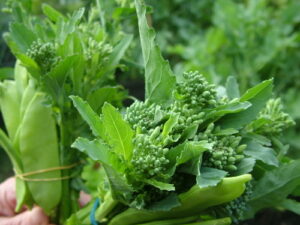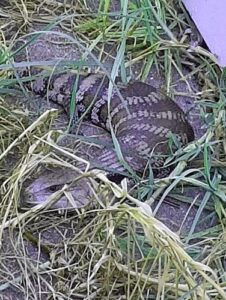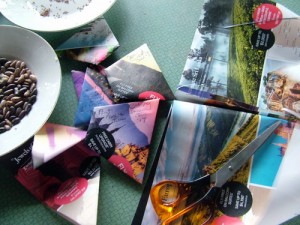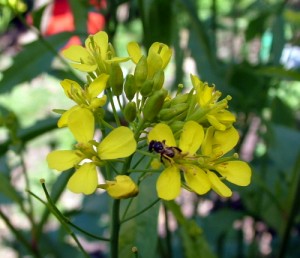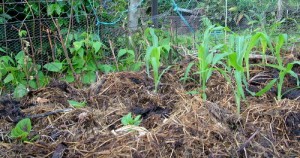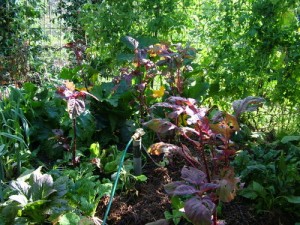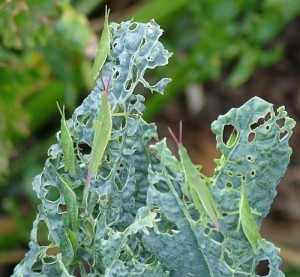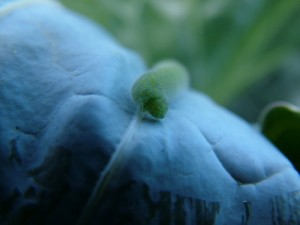I try not to do gluts. With the new, tiny garden area sequencing has become even more important – 60cm trellised row of snow peas each month, no more or I will run out of room to plant before the end of the season.
Usually I leave the slugs to the bluetongue. I’d hate to starve him (or her) into deciding to live somewhere else. But he’s a bit too well fed, and I’m not. A cup with an inch of beer, buried so the rim is at the soil surface, overnight collected all these. The chooks will feast on beer marinated slugs.
But the cabbage moths have arrived, and I think that’s about the end for this year. We’ve had a good three months of harvesting broccolini, cauliflowers, kale, pak choi, napa cabbage, mustard. But from now on it’s not worth it, at least not here in the sub-tropics.
Like these little origami seed packets, taught to me by Morag Gamble from Our Permaculture Life. Such a pleasure chopping up junk mail and turning it into these, and it makes sharing seed so barrier free.
We ate all the outside leaves of the young pak choi, mostly in won tons but also in soups and stir fries. Then I left them to flower and the tiny, stingless native bees feasted on the flowers, giving us tiny amounts of absolutely delectable light champagney honey. Then I let them set seed before feeding them, mature seeds and all, to the chooks.
It is tipped to reach 41°C today. That’s 106°F for those of you in USA. Tackling the kind of bad habits and addictions that are disrupting the planet’s climate is hard and scary. Change always is. But how many heat waves, firestorms, floods, tornados, cyclones, tidal surges, droughts, food shortages, and extinctions add up to harder? and more scary?
Summer is a much harder gardening season than winter in Australia. Most years there’s a set of frizzle days sometime over the summer – days when the temperature is up around 40ºC for a few days in a row. It can be really disheartening. Your garden can be looking good one day, then a few days later it’s all fried.
I don’t get frost in my sub-tropical garden, so winter is a good growing season here. It is the frizzle days of summer that are the challenge, when a whole garden can be wiped out in one brutal day. But just like gardeners in frost-prone climates, you develop a range of strategies to work the odds.
The grasshoppers love kale, but that’s ok, because the chooks love grasshoppers…
There are many, many organic remedies for cabbage moth caterpillars (and the web moth caterpillars that will be next to arrive). There are nets and traps and fake moths and eggshells and trichogramma wasps and dipel. But the only one I reckon is worth the time and effort for results is timing.
